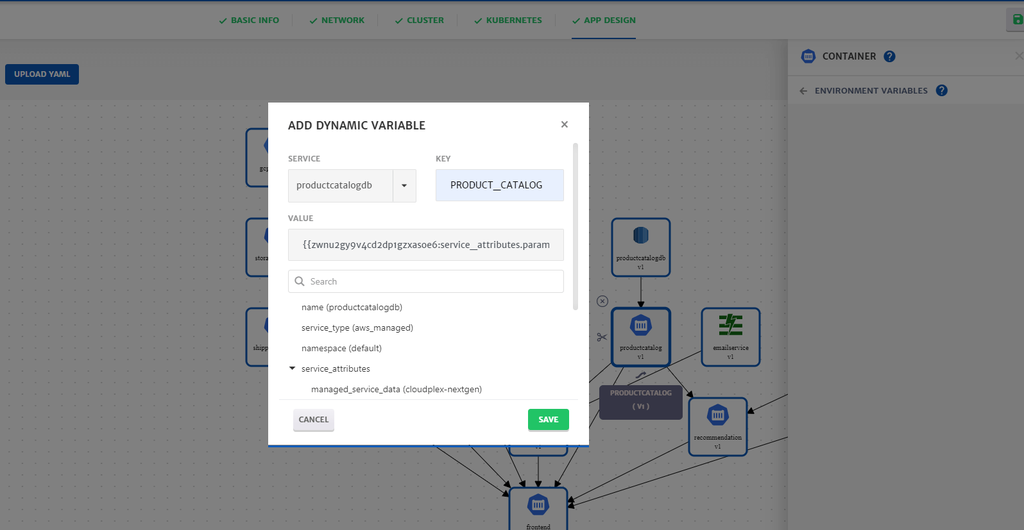Kubernetes Day-2 Operations - Part II: Dynamic Parameters, Kubernetes Cluster Bootstrapping & Kubernetes RBAC
in Kubernetes

While every developer wishes to build, debug, and deploy Kubernetes applications in easy steps, that's not the case most of the time. As you may have already noticed, Kubernetes is unlike your typical software stack.
It is not only complex, to begin with, but also to master. It is undeniably confusing if you're unfamiliar with infrastructure technologies, and having a leaning towards DevOps principles will further complicate the situation.
DevOps approach requires you to get Kubernetes access and deployment as early as possible during the development lifecycle. You need to shift software testing left on the development pipeline to avert costly mistakes during the staging and production stage.
Since most companies can't fix on a greenfield, to begin with, it is your responsibility to make their existing stack of software run effortlessly with Kubernetes or, at least, alongside freshly built stacks that are orchestrated on Kubernetes. Moreover, a few processes are still required to be adapted to the new environment. This especially true for deployment processes. Even with Kubernetes veterans on your team, the adoption of Kubernetes is still a pain. It might suck out a substantial amount of energy and time from your DevOps team.
Kubernetes could be cheaper to use and deploy, but not when the cost time of your engineers is spent figuring it out rather than generating new "tangible" business value.
Nevertheless, Kubernetes day-2 operations were never easy. In the first part of the three blog series, we covered three pain points of Kubernetes day-2 operations: Manifest Management, Volume Management, Kubernetes Cluster Bootstrapping, and how CloudPlex fix them for you.
In the part-2, I will cover three more pain points that any developer would relate to-- Dynamic Parameters, Kubernetes Cluster Bootstrapping & Kubernetes RBAC.
Dynamic Parameters
While putting together an application, how you configured Docker says a lot about its performance in production and is, thus, a critical part. The environment variables play an important role inside a Kubernetes cluster when configuring your application to key-value pairs. Except, passing environment variables in Kubernetes is not as straightforward as most developers make us believe. If your application deployment comprises a large number of containers that need to interact with each other every now and then, then even reassigning value to a single variable becomes a long, complicated task for DevOps teams.
If you were using your own managed MySQL container shared across a large number of Docker containers at the time of development, you might pass on some exceptions while passing environment variables in Kubernetes in production. Your decision to switch to a provider-managed MySQL server might not go well with your existing container implementations unless you're comfortable changing the connection string in every Docker container, sometimes manually. There will come the point where this all becomes too complex to maintain and pass on updates.
Kubernetes Cluster Bootstrapping
A setup of comprehensive Kubernetes infrastructure consists of proper DNS address, load balancing policies, security certificates, and robust role-based access control (RBAC) alongside a slew of auxiliary components that make the deployment process possible.
In a nutshell, deploying your own Kubernetes cluster (or DIY Kubernetes) from scratch is a long setup and not a cup of tea for every developer. It requires a particular degree of understanding.
Provider-managed Kubernetes clusters might be the first preference of most developers at the time of production, although they often introduce restrictions absent in DIY-Kubernetes: you're not allowed to use custom machine images or have ssh access to machines. Hence, you can't configure certain parts of the cluster at a time when launching a Kubernetes cluster from scratch is already a slow process on certain cloud providers.
Even automation tools like Terraform is of little help when deploying a Kubernetes cluster from scratch amidst these challenges. While Terraform automates a part of K8 cluster deployment, it still takes multiple steps and a lot of manual configurations. This is how you may deploy a Kubernetes cluster from scratch.
- Deploy infrastructure nodes using Terraform
- Use kubeadm to deploy Kubernetes cluster
Kubernetes RBAC
A built-in role access control (RBAC) mechanism that allows you to configure fine-grained and specific sets of permissions inside a Kubernetes cluster, Kubernetes RBAC permissions define how you interact with a Kubernetes object in the cluster or within a particular namespace of the cluster. While Kubernetes RBAC makes managing permissions inside a cluster a cakewalk, it is not very friendly to developers since they have to manually create the roles, role bindings, and service accounts. To make the matter worse, each container or service may need a different RBAC configuration. That is, you have to go through the nightmare of creating bindings between service accounts and roles for each service. Did Kubernetes creators have a grudge against developers?
Developers! Bring CloudPlex to your rescue.
Luckily for developers, CloudPlex addresses not one but all of the above three pain points. Who says Kubernetes day-2 operation must be a nightmare for developers? Not when CloudPlex is at your rescue.
If dynamic parameters are ruining your life one environment variable at a time, you need a way to define dynamic parameters within your services. Fortunately, CloudPlex gives you one. It resolves the value of these parameters itself and replaces them at deployment time on a Kubernetes cluster.
And when moving from a self-managed MySQL container to a provider-managed MySQL server, you can do that with an intuitive, simple drag and drop gesture of CloudPlex's tools to replace the container without changing any variable in the service.
CloudPlex uncomplicates what it takes to deploy a K8 cluster from scratch. You can run your own cluster without the limitations set by managed providers like GKE, AKS, and EKS. Any developer can start a Kubernetes cluster from scratch, with CloudPlex providing a rich set of K8s and infrastructure configuration options. Using a custom machine image and ssh into machines to install additional configurations is not a hassle.
Not to mention, CloudPlex allows you to use the provider-managed Kubernetes clusters (GKE, AKS, EKS) to deploy applications as well.
If Kubernetes' default RBAC settings are giving you trouble sleeping, with CloudPlex, you only have to provide information about resources and permissions. It automatically creates and configures the Service Accounts, Roles, and Role Bindings.
CloudPlex makes designing, developing, testing, and running Kubernetes applications painless and fast. It is a tool for developers by developers.
Get started now and create your first Kubernetes cluster for free in a few minutes.
Get similar stories in your inbox weekly, for free
Share this story:

Cloudplex
Founder and CEO of Cloudplex - We make Kubernetes easy for developers.
Latest stories
HIPAA and PCI DSS Hosting for SMBs: How to Choose the Right Provider
HIPAA protects patient data; PCI DSS protects payment data. Many small and mid-sized businesses now …
The Rise of GPUOps: Where Infrastructure Meets Thermodynamics
GPUs used to be a line item. Now they're the heartbeat of modern infrastructure.
Top Bare-Metal Hosting Providers in the USA
In a cloud-first world, certain workloads still require full control over hardware. High-performance computing, latency-sensitive …
Top 8 Cloud GPU Providers for AI and Machine Learning
As AI and machine learning workloads grow in complexity and scale, the need for powerful, …
How ManageEngine Applications Manager Can Help Overcome Challenges In Kubernetes Monitoring
We tested ManageEngine Applications Manager to monitor different Kubernetes clusters. This post shares our review …
AIOps with Site24x7: Maximizing Efficiency at an Affordable Cost
In this post we'll dive deep into integrating AIOps in your business suing Site24x7 to …
A Review of Zoho ManageEngine
Zoho Corp., formerly known as AdventNet Inc., has established itself as a major player in …
Should I learn Java in 2023? A Practical Guide
Java is one of the most widely used programming languages in the world. It has …
The fastest way to ramp up on DevOps
You probably have been thinking of moving to DevOps or learning DevOps as a beginner. …
Why You Need a Blockchain Node Provider
In this article, we briefly cover the concept of blockchain nodes provider and explain why …
Top 5 Virtual desktop Provides in 2022
Here are the top 5 virtual desktop providers who offer a range of benefits such …














